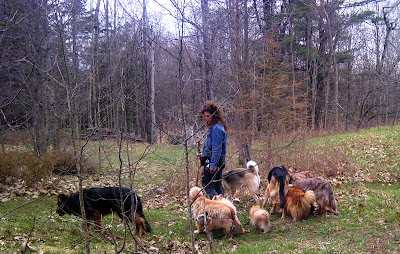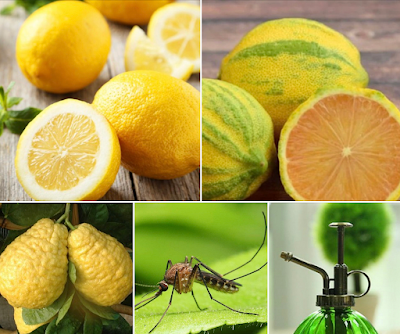Dog Behaviour – How to Get Your Dog to Let Go of Something (ball, bone, sock, etc.)
To get your dog to let go of an object, the first concept you need to understand
is…
You need to practice mindfulness.
If you enter a situation with an attitude that embodies ire, tension and/or forcefulness most humans are not going to
want to comply with what you want, unless of course you threaten them with a
weapon – the same is so for a dog.
If you go in to the situation expecting to have an argument – particularly with a dog, you will in most cases get that argument.
If you go in to the situation expecting to have an argument – particularly with a dog, you will in most cases get that argument.
Dogs are more perceptive communicators than most people. A dog does know
what you are thinking, what you are feeling – usually before you are aware of
your thought. …I prove this every time I work with a client and their dog. Are
you skeptical? Well many of my clients are at first, but very quickly after the
initial shock of realization, they understand just how perceptive their dog
really is.
The angrier, more frustrated, more irritated you are - as you advance toward the dog the greater likelihood that the dog will move to evade you. Look at it in a way that is relative to yourself - if someone advances towards you in such a manner are you likely to stick around or leave? If you do stick around you are going to prepare yourself for a fight. So either way the situation is not supportive of a respectful outcome.
The angrier, more frustrated, more irritated you are - as you advance toward the dog the greater likelihood that the dog will move to evade you. Look at it in a way that is relative to yourself - if someone advances towards you in such a manner are you likely to stick around or leave? If you do stick around you are going to prepare yourself for a fight. So either way the situation is not supportive of a respectful outcome.
The more physical force you use to pull the item out of the dog’s mouth the more the dog is likely to:
- Clamp his/her bite tighter around the object.
- Attempt to put more of the object in his/her mouth.
- Put greater force into trying to tug the object away from you.
A perfect example – today while on an
off-leash walk (with my Boxer Robbie and my GSD x Husky Sarah), Sarah found a
small, sharp avian bone, with some flesh and blood still on it. Likely just
dropped by a hawk or owl in mid-flight. Now I did not particularly want Sarah
to have that bone as it was broken and sharp – it could cause some injury to
her innards if she swallowed It. Most
people would:
- Panic.
- Move in to the area (that the dog is occupying) with great agitation.
- Yell in an agitated (emotional) fashion and otherwise become ‘reactive’.
Sarah is the type of dog that very few humans
could control – she spent part of her first year of life as a stray and then
spent three months in a pound (shelter). No one adopted her because she was ‘hyper’,
‘dominating’. This young lady ended up on the ‘kill’ list. Anyway after ending
up pulled by the rescue I was fostering for, she made her way through several
foster homes and one adoptive family…each time being returned for her unruly
behaviour…before I took her in. Sarah
can be the Denis-the-Menace of dogs, her nick name could easily be ‘Wile-E-Coyote’
. This was a dog that would never in a million years surrender anything to
anybody. Mind you, I think you have to give her credit…her wiliness allowed her
to survive on the streets as a stray youngster.
Well, when I saw Sarah about to pick up that bone,
all I had to do was:
- Get her attention (I was about 10 feet away from her) so I vocalized ‘uh’ in a calm, solid tone, at which point she looked at me.
- I held her gaze and indicated to her to ‘leave it’.
- I then calmly walked up, with a smile in my heart and spirit and picked the bone up;
- That was it - end-of.
- Sarah willingly accepted the situation and happily bounced on.
- If instead I had walked up to her with the thought in my head 'you are a bad dog, you are not going to let that go, etc. I would have created the opposite reaction.
I have earned the right to take over a situation (such as the one described above) with Sarah and my other dogs because I have earned their respect. How? By practising mindfulness. Last week in almost the same spot on the trail, Robbie my Boxer found a fresh, wild turkey wing-bone, with wing and feathers attached…part of a coyote or wolf’s meal – the meal having been disturbed by something or someone! Robbie is another one of my dog’s who had a difficult past. When I first met Robbie he would have attacked a person who tried to take anything from him. And when I say attack I really mean attack.
Robbie was aggressive-reactive (or if you prefer ‘red-zone’) on a scale of 1 to 10, he was a 15.
As I approached Robbie and his wild turkey 'prize' I did not feel or project anger, dominance etc. when he picked up the fresh wild turkey wing/bone. I simply walked up to him with my calm, grounded presence and quietly but firmly put my hand around the part of the bone which was sticking out of his mouth (with foot long feathers attached) and proceeded to do as follows…
Robbie was aggressive-reactive (or if you prefer ‘red-zone’) on a scale of 1 to 10, he was a 15.
As I approached Robbie and his wild turkey 'prize' I did not feel or project anger, dominance etc. when he picked up the fresh wild turkey wing/bone. I simply walked up to him with my calm, grounded presence and quietly but firmly put my hand around the part of the bone which was sticking out of his mouth (with foot long feathers attached) and proceeded to do as follows…
If your dog has an edge of the item sticking out of his/her mouth:
- Engage mindfulness.
- Gently but firmly place your hand on the part of the item that is sticking out (depending on the situation you can also use your foot instead of your hand).
- Don't pull on the item as by doing so you will have just provided the impetuous for an argument in the form of a tug-of-war…remember if you ask for an argument you will get an argument.
- Instead simply take-ownership of that portion of the item by keeping a firm - (but not tense-tight) hold on it.
- Breathe in through your nose and out through your mouth in a consciously relaxed and deliberate manner. Don’t allow your mouth to compress into a closed, hard line – if you do you are tense.
- Still yourself physically and be calm in mind - be patient and breathe again.
- Now slowly, quietly, calmly, move your hand to take over a little more of the object – your hand should end-up where the object meets your dog’s mouth.
- Now, no pulling - just calm, firm hold.
- If your dog starts to pull, just retain your hold and still yourself – do not pull back;
- Hold your ground quietly without a word.
- Most humans, unless they are trained to be, have very little patience - where as dogs have a lot of patience. If you do this exercise with:
- Self-disciplined patience and calm.
- While holding your ground for however many seconds it takes while keeping a calm-non-argumentative hold (with both mind and hand).
- While deliberately, consciously breathing.
- Your dog will surrender the object to you.
- This is simply a test of wills - if you can't exceed your dog’s patience you will lose.
- Keep-in-mind, while 30 or 60 seconds may feel like forever to you (because we are impatient as a species) it is, in-fact merely seconds.
- Again - it is a situation where one of you must back down (your dog or yourself). This is a psychological situation as much if not more than a physical situation.
- When used properly, psychological control with calm, slight physical pressure is so much more powerful than physical force – it is also a more safe approach for all involved – which is why it is a method used by dogs themselves.
What
do you really want? For your dog to
:
- Stop – well you must stop first…stop tugging, stop moving about;
- Let go – he won’t let go if you start tugging, he will tug just as you are doing.
The
point is to let him know in the most quiet but directive of ways (as noted
above) that this is the way it is going to be.
This is how a well balanced dog takes an object from another dog.
The
method of choice used by such dogs is not intrusive physical force which would
result in injury and death. Instead, dogs prefer to use more subtle physically
restrained, psychologically powerful means. The Alpha 'thing' is a false concept.
In truth dogs prefer leadership – which is not the same as the ‘Alpha’ concept
as most people understand the term.
Adhere to Mindfulness
Mindfulness: self-restraint, self discipline, in body and mind; by maintaining a quite, non-vocal, calm patience coupled with a firm but non-tense
hold - you become a respectful, directive presence.
This
is dog language employs as a well balanced dog would choose to communicate in a non-aggressive manner to
another dog in order to claim space or an on object without a fight.
This is a very respectful and psychologically powerful method that requires no physical force, but instead a grounded, self-restrained presence.
This is a very respectful and psychologically powerful method that requires no physical force, but instead a grounded, self-restrained presence.
When
doing this exercise:
- Make sure you are completely emotionally neutral;
- To firm-up the direction you must make sure that your physical presence is completely aligned with your mental focus.
- 'OK, give it up Robbie - inevitably one of us has to surrender and it will not be me';
The
attitude with which you say this to yourself must be without ire, without
arrogance or frustration - just deliberately grounded, calm.
The method as described above when used to reclaim an object from your dog, respects the natural way of a dog.
If you take a dog:
The method as described above when used to reclaim an object from your dog, respects the natural way of a dog.
If you take a dog:
- That has learned to back people off by using dominating and aggro-reactive tactics.
- And put that dog in a situation where the human handling/directing the dog, employs force-based tactics.
- You will not engender the dog’s respect.
- You may try to dominate the dog using force but that will only further destabilize the dog.
- Always expect to get a treat for doing something that he should not be doing.
- Learn that an ‘altered state of normal’ is normal.
- Never learn to behave respectfully.
- Never learns to adopt a threshold.
- Never learns to ask permission to take things.
- And, what do you do if you are somewhere, you do not have treats, your dog grabs something and if you don’t successfully retrieve that object from your dog he could ingest it and become ill or otherwise injured?
- A lack self-control on the human's part.
- A lack of understanding of the intelligence of a dog and a dog's natural skill to communicate.
In
contrast - the method which I have described above to take over the situation
is a well adjusted dog's way to handle the situation.
It is…
It is…
- Non-aggressive.
- Non-argumentative, and;
- Instructional for the dog.
These are the same qualities that make a well balanced dog.
If
you want to earn your dog's respect there is little to no room for human arrogance, frustration or
anger.
This is what I teach my clients. This is why I can take an object away from a dog without an adverse reaction from the dog – including dogs who bite people!
Having noted all of this above, some people will still say - offer your dog something else instead - my answer to that is NO. That is a negotiation - and the dog will learn to use it to manipulate, just as a person would. This type of strategy does not teach your dog that is should not take what he does not have your permission to take. And in the process you do learn how to stop the behaviour. Offering something in exchange is an avoidance and works around the issue - in which case it will never actually resolve the issue – you will in the future, continue to have to deal with the issue.
You don't want to argue.
You want to direct, mentor and ensure your dog’s safety.
Holistic Behavioral Services for Your Dog
For information about my holistic behavioral services, visit my holistic behavioral services page.
For dogs of all ages, sizes and breeds.
My behavioral services are available worldwide via video consultation.
🌎 USA | Canada | UK | Europe | Australia | New Zealand | Asia | South and Central America | Africa | UAE
📱FaceTime | Facebook | Skype | WhatsApp
To set-up your holistic behavioral session get in-touch via email, go to my contact me page.
Affiliations to Companies
✓ None.
✓ I don't sell food, supplements, or other products.
✓ I'm not aligned with any companies.
Holistic Diet, Nutrition, Wellness Services Tailored to Your Individual Dog and Cat
For information about my holistic diet, nutrition and wellness services, visit my holistic wellness services page.
Maintain good health | Address acute and chronic health issues | Pre and post surgery support and recovery
My holistic wellness services are available worldwide via video consultation.
🌎 USA | Canada | UK | Europe | Australia | New Zealand | Asia | South and Central America | Africa | UAE
📱FaceTime | Facebook | Skype | WhatsApp
To set-up your holistic wellness consultation get in-touch via email, go to my contact me page.
Article and graphics by Karen Rosenfeld.
.jpg)


















